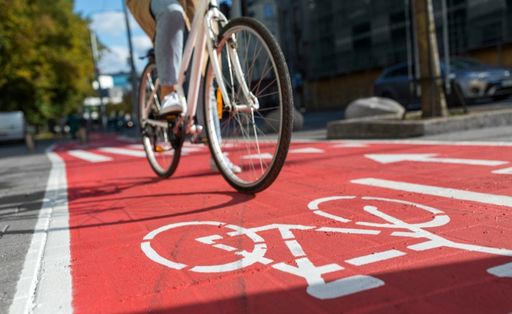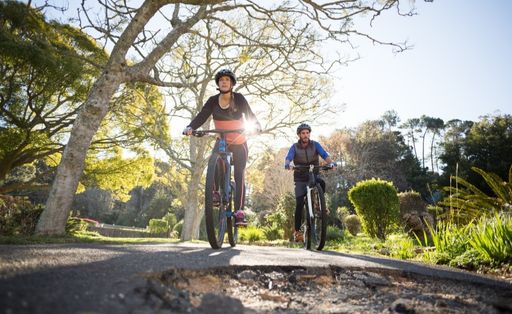- Improving bike-friendly roads and increasing access to cycling can benefit individuals and their communities in several ways, including environmental protection, improved public health outcomes, and cost savings.
- To achieve these benefits, cities must create designated cycling lanes with proper maintenance to keep cyclists safe from cars.
- Speed bumps or other traffic calming measures should also be installed on shared roads to reduce the speeds of vehicles.
- Infrastructure improvements such as pothole repair and expanding existing bike paths can improve overall ride quality for cyclists.
- Cyclist safety must also be addressed through education programs that cover topics such as wearing protective gear, understanding traffic laws, defensive cycling techniques, and emergency response procedures.

Biking has become an increasingly popular form of transportation in the 21st century. It is often seen as an environmentally friendly, healthy, and cost-effective way of getting around. With more people looking to lower their carbon footprints and reduce their dependence on traditional forms of transport, biking has become an attractive proposition. To ensure that more people can enjoy the benefits of cycling, cities must create more bike-friendly roads.
Not only does biking provide a convenient alternative to cars or public transport, but it also offers numerous health benefits. Studies have shown that regular cyclists can improve their lung function and reduce their risk of heart disease by up to 50%. In addition, biking requires less energy than driving a car and emits far fewer pollutants, such as carbon dioxide, into the atmosphere. This makes it much better for the environment than other transport forms.
Moreover, biking can help reduce traffic congestion and save individuals and local governments money. Studies in Europe have found that investing in cycling infrastructure leads to significant economic gains due to reduced air pollution emissions and improved public health outcomes.
Unfortunately, today’s roads might not be ready for an increase in cyclists. Here are a few things that need to happen to change that scenario.
Contents
Bike Lane Marking and Signage
Bike safety is a primary concern for cyclists on the roads today. Despite the increasing popularity of cycling, many streets have not been designed with cyclists in mind, making it difficult and dangerous for bicycle riders to navigate. A recent study revealed that nearly one out of five collisions between cars and bikes occur due to drivers failing to give cyclists enough space while passing. This has made it all the more important to create dedicated bike lanes to ensure safe riding conditions for cyclists.
Having separate bike lanes dramatically reduces the chances of collision between cars and bicycles, as drivers can easily see where the cyclists are going. Bike lanes also provide cyclists with increased visibility from motorists and help them avoid obstacles or debris on the road. Furthermore, bike lanes can encourage more people to use their bicycles for transportation by providing them with a safer route than sharing the road with motor vehicles.
However, simply marking bike lanes on the road is not enough – they must also be adequately maintained for them to serve their purpose of keeping cyclists safe from car accidents. Regularly sweeping debris from bike paths is essential since loose gravel and other hazards can easily cause a cyclist to lose control and crash into an oncoming vehicle. Additionally, installing speed bumps or other traffic calming measures can help reduce speeds along shared roads, enhancing safety levels for drivers and cyclists alike.
Road Improvements

Potholes will not only damage a car, but they can also prove to be deadly for cyclists. Infrastructure improvements are necessary if cities want to provide safe road biking conditions. Repairing potholes and cracks and smoothing out uneven surfaces can reduce the chances of cyclists encountering these hazards while improving overall ride quality. You can get a bulk of asphalt sealant for sale to fix those road issues and make the city more bike-friendly.
In addition, city officials should look into expanding cycling networks by introducing more dedicated bike paths or widening existing ones. This improves accessibility for cyclists and encourages more people to take up bicycling as a mode of transportation.
However, there will be times when cyclists have to swerve multiple lanes to go through intersections, which could be dangerous if drivers are not paying attention. To ensure cyclists’ safety while going through such intersections, traffic lights should be adjusted to give them more time to reach their destination safely.
Cyclist Safety Training

Creating more bike-friendly roads is not enough to ensure cyclist safety – education is also essential. Safe riding will always be vital, especially when navigating busy streets, and cyclists should be taught basic safety rules, such as the proper way to turn left or right. They must also learn about traffic laws and how to respond to emergencies. Here are a few programs to cover in a cyclist safety training course:
Safety gear and equipment program
A cyclist safety training course should emphasize the importance of wearing a helmet and other protective gear while riding.
Educating cyclists about traffic laws
Cyclists must understand their rights on the road and follow all relevant traffic laws, such as stopping at red lights and yielding to pedestrians.
Defensive cycling techniques
Learners must be taught safe bicycling practices such as properly signal turns and avoiding dangerous situations while biking.
Emergency response program
Participants should learn how to respond in the event of an accident or injury while biking, including first aid and calling for help.
Final Thoughts
Creating more bike-friendly roads is crucial if cities want to encourage more people to cycle. There needs to be a concerted effort from all stakeholders – local governments, businesses, and citizens – to create safer riding conditions for cyclists. By taking these measures, cities will soon have much safer bike paths free from hazards or obstructions – allowing cyclists of all ages to enjoy the many benefits of biking without worries.
